541 low relevance results shown for 'Red'. Prev |1|2|3|4|5|6|7|8|9|10|11|12|13|14|15|16|17|18|19|20|21|22 | Next | View 100 per page
Showing low relevance matches only. Return to normal search results
DNA - The transmission of heritable characteristics from one generation to the next involves DNA and genes ACSSU097 Year 6 Physical Sciences
Electrical Circuits - Electrical energy can be transferred and transformed in electrical circuits and can be generated from a range of sources ACSSU115 Year 7 Earth and Space Sciences
Earth Moon Sun - Predictable phenomena on Earth, including seasons and eclipses, are caused by the relative positions of the sun, Earth and the moon ACSSU229 Year 10 Physical Sciences
Forces and Motion - The motion of objects can be described and predicted using the laws of physics ACSBL029 Year 11 Biodiversity and the interconnectedness of life
Ecosystem dynamics - Models of ecosystem interactions (for example, food webs, successional models) can be used to predict the impact of change and are based on interpretation of and extrapolation from sample data (for example, data derived from ecosystem surveying techniques ACSBL085 Year 12 Heredity and continuity of life
DNA genes and the continuity of life - Frequencies of genotypes and phenotypes of offspring can be predicted using probability models, including Punnett squares, and by taking into consideration patterns of inheritance, including the effects of dominant, autosomal and sex-linked alleles and mu ACSBL090 Year 12 Heredity and continuity of life
Continuity of life on Earth - Natural selection occurs when selection pressures in the environment confer a selective advantage on a specific phenotype to enhance its survival and reproduction; this results in changes in allele frequency in the gene pool of a population ACSBL091 Year 12 Heredity and continuity of life
Continuity of life on Earth - In additional to environmental selection pressures, mutation, gene flow and genetic drift can contribute to changes in allele frequency in a population gene pool and results in microevolutionary change ACSCH056 Year 11 Molecular interactions and reactions
Intermolecular forces and gases - The shapes of molecules can be explained and predicted using three dimensional representations of electrons as charge clouds and using valence shell electron pair repulsion (VSEPR) theory ACSCH073 Year 11 Molecular interactions and reactions
Rates of chemical reactions - Catalysts, including enzymes and metal nanoparticles, affect the rate of certain reactions by providing an alternative reaction pathway with a reduced activation energy, hence increasing the proportion of collisions that lead to a chemical change ACSCH091 Year 12 Equilibrium acids and redox reactions
Chemical equilibrium systems - Over time, physical changes and reversible chemical reactions reach a state of dynamic equilibrium in a closed system, with the relative concentrations of products and reactants defining the position of equilibrium ACSCH096 Year 12 Equilibrium acids and redox reactions
Chemical equilibrium systems - Equilibrium position can be predicted qualitatively using equilibrium constants ACSCH097 Year 12 Equilibrium acids and redox reactions
Chemical equilibrium systems - Acids are substances that can act as proton (hydrogen ion) donors and can be classified as monoprotic or polyprotic depending on the number of protons donated by each molecule of the acid ACSCH098 Year 12 Equilibrium acids and redox reactions
Chemical equilibrium systems - The strength of acids is explained by the degree of ionisation at equilibrium in aqueous solution, which can be represented with chemical equations and equilibrium constants (Ka) ACSCH099 Year 12 Equilibrium acids and redox reactions
Chemical equilibrium systems - The relationship between acids and bases in equilibrium systems can be explained using the Brønsted Lowry model and represented using chemical equations that illustrate the transfer of hydrogen ions ACSCH100 Year 12 Equilibrium acids and redox reactions
Chemical equilibrium systems - The pH scale is a logarithmic scale and the pH of a solution can be calculated from the concentration of hydrogen ions; Kw can be used to calculate the concentration of hydrogen ions from the concentration of hydroxide ions in a solution ACSCH101 Year 12 Equilibrium acids and redox reactions
Chemical equilibrium systems - Acidbase indicators are weak acids or bases where the acidic form is of a different colour to the basic form ACSCH102 Year 12 Equilibrium acids and redox reactions
Chemical equilibrium systems - Volumetric analysis methods involving acidbase reactions rely on the identification of an equivalence point by measuring the associated change in pH, using chemical indicators or pH meters, to reveal an observable end point ACSCH103 Year 12 Equilibrium acids and redox reactions
Oxidation and reduction - A range of reactions, including displacement reactions of metals, combustion, corrosion, and electrochemical processes, can be modelled as redox reactions involving oxidation of one substance and reduction of another substance ACSCH104 Year 12 Equilibrium acids and redox reactions
Oxidation and reduction - Oxidation can be modelled as the loss of electrons from a chemical species, and reduction can be modelled as the gain of electrons by a chemical species; these processes can be represented using half equations ACSCH106 Year 12 Equilibrium acids and redox reactions
Oxidation and reduction - The relative strength of oxidising and reducing agents can be determined by comparing standard electrode potentials ACSCH107 Year 12 Equilibrium acids and redox reactions
Oxidation and reduction - Electrochemical cells, including galvanic and electrolytic cells, consist of oxidation and reduction half reactions connected via an external circuit that allows electrons to move from the anode (oxidation reaction) to the cathode (reduction reaction) ACSCH108 Year 12 Equilibrium acids and redox reactions
Oxidation and reduction - Galvanic cells, including fuel cells, generate an electrical potential difference from a spontaneous redox reaction; they can be represented as cell diagrams including anode and cathode halfequations ACSCH110 Year 12 Equilibrium acids and redox reactions
Oxidation and reduction - Cell potentials at standard conditions can be calculated from standard electrode potentials; these values can be used to compare cells constructed from different materials ACSCH130 Year 12 Structure synthesis and design
Properties and structure of organic materials - Data from analytical techniques, including mass spectrometry, xray crystallography and infrared spectroscopy, can be used to determine the structure of organic molecules, often using evidence from more than one technique ACSPH040 Year 11 Thermal nuclear and electrical physics
Electrical circuits - The energy available to charges moving in an electrical circuit is measured using electric potential difference, which is defined as the change in potential energy per unit charge between two defined points in the circuit ACSPH041 Year 11 Thermal nuclear and electrical physics
Electrical circuits - Energy is required to separate positive and negative charge carriers; charge separation produces an electrical potential difference that can be used to drive current in circuits ACSPH061 Year 11 Linear Motion and Waves
Linear motion and force - Representations, including graphs and vectors, and/or equations of motion, can be used qualitatively and quantitatively to describe and predict linear motion ACSPH064 Year 11 Linear Motion and Waves
Linear motion and force - Momentum is a property of moving objects; it is conserved in a closed system and may be transferred from one object to another when a force acts over a time interval ACSPH065 Year 11 Linear Motion and Waves
Linear motion and force - Energy is conserved in isolated systems and is transferred from one object to another when a force is applied over a distance; this causes work to be done and changes to kinetic and/or potential energy of objects ACSPH073 Year 11 Linear Motion and Waves
Waves - A mechanical system resonates when it is driven at one of its natural frequencies of oscillation; energy is transferred efficiently into systems under these conditions ACSPH076 Year 11 Linear Motion and Waves
Waves - A wave model explains a wide range of lightrelated phenomena including reflection, refraction, total internal reflection, dispersion, diffraction and interference; a transverse wave model is required to explain polarisation ACSPH021 Year 11 Thermal nuclear and electrical physics
Heating processes - Change of state involves internal energy changes to form or break bonds between atoms or molecules; latent heat is the energy required to be added to or removed from a system to change the state of the system
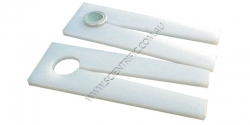
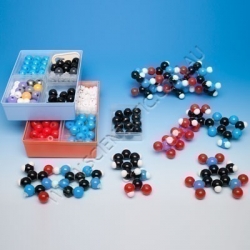
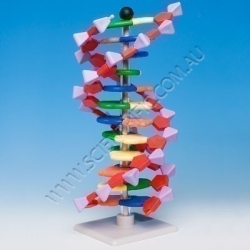
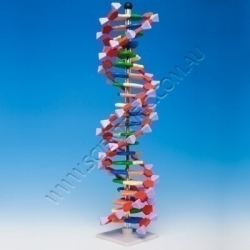



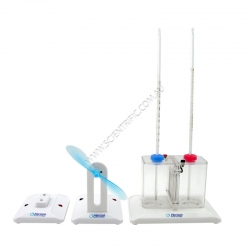
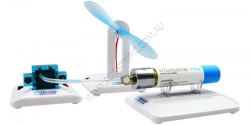
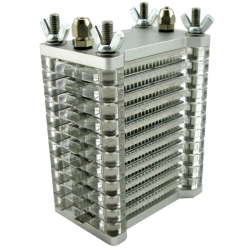
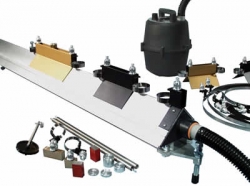


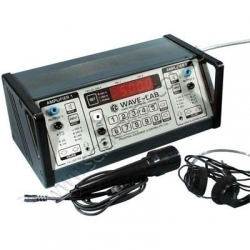


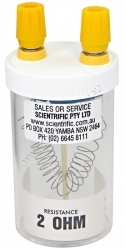





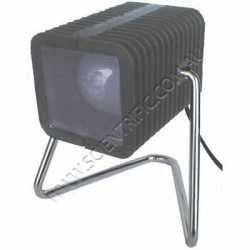
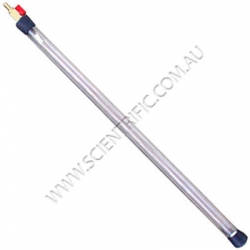
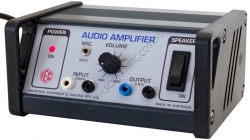
541 low relevance results shown for 'Red'. Prev |1|2|3|4|5|6|7|8|9|10|11|12|13|14|15|16|17|18|19|20|21|22 | Next | View 100 per page
Showing low relevance matches only. Return to normal search results
Curriculum resources related to 'Red'
ACSSU184 Year 10 Biological SciencesDNA - The transmission of heritable characteristics from one generation to the next involves DNA and genes ACSSU097 Year 6 Physical Sciences
Electrical Circuits - Electrical energy can be transferred and transformed in electrical circuits and can be generated from a range of sources ACSSU115 Year 7 Earth and Space Sciences
Earth Moon Sun - Predictable phenomena on Earth, including seasons and eclipses, are caused by the relative positions of the sun, Earth and the moon ACSSU229 Year 10 Physical Sciences
Forces and Motion - The motion of objects can be described and predicted using the laws of physics ACSBL029 Year 11 Biodiversity and the interconnectedness of life
Ecosystem dynamics - Models of ecosystem interactions (for example, food webs, successional models) can be used to predict the impact of change and are based on interpretation of and extrapolation from sample data (for example, data derived from ecosystem surveying techniques ACSBL085 Year 12 Heredity and continuity of life
DNA genes and the continuity of life - Frequencies of genotypes and phenotypes of offspring can be predicted using probability models, including Punnett squares, and by taking into consideration patterns of inheritance, including the effects of dominant, autosomal and sex-linked alleles and mu ACSBL090 Year 12 Heredity and continuity of life
Continuity of life on Earth - Natural selection occurs when selection pressures in the environment confer a selective advantage on a specific phenotype to enhance its survival and reproduction; this results in changes in allele frequency in the gene pool of a population ACSBL091 Year 12 Heredity and continuity of life
Continuity of life on Earth - In additional to environmental selection pressures, mutation, gene flow and genetic drift can contribute to changes in allele frequency in a population gene pool and results in microevolutionary change ACSCH056 Year 11 Molecular interactions and reactions
Intermolecular forces and gases - The shapes of molecules can be explained and predicted using three dimensional representations of electrons as charge clouds and using valence shell electron pair repulsion (VSEPR) theory ACSCH073 Year 11 Molecular interactions and reactions
Rates of chemical reactions - Catalysts, including enzymes and metal nanoparticles, affect the rate of certain reactions by providing an alternative reaction pathway with a reduced activation energy, hence increasing the proportion of collisions that lead to a chemical change ACSCH091 Year 12 Equilibrium acids and redox reactions
Chemical equilibrium systems - Over time, physical changes and reversible chemical reactions reach a state of dynamic equilibrium in a closed system, with the relative concentrations of products and reactants defining the position of equilibrium ACSCH096 Year 12 Equilibrium acids and redox reactions
Chemical equilibrium systems - Equilibrium position can be predicted qualitatively using equilibrium constants ACSCH097 Year 12 Equilibrium acids and redox reactions
Chemical equilibrium systems - Acids are substances that can act as proton (hydrogen ion) donors and can be classified as monoprotic or polyprotic depending on the number of protons donated by each molecule of the acid ACSCH098 Year 12 Equilibrium acids and redox reactions
Chemical equilibrium systems - The strength of acids is explained by the degree of ionisation at equilibrium in aqueous solution, which can be represented with chemical equations and equilibrium constants (Ka) ACSCH099 Year 12 Equilibrium acids and redox reactions
Chemical equilibrium systems - The relationship between acids and bases in equilibrium systems can be explained using the Brønsted Lowry model and represented using chemical equations that illustrate the transfer of hydrogen ions ACSCH100 Year 12 Equilibrium acids and redox reactions
Chemical equilibrium systems - The pH scale is a logarithmic scale and the pH of a solution can be calculated from the concentration of hydrogen ions; Kw can be used to calculate the concentration of hydrogen ions from the concentration of hydroxide ions in a solution ACSCH101 Year 12 Equilibrium acids and redox reactions
Chemical equilibrium systems - Acidbase indicators are weak acids or bases where the acidic form is of a different colour to the basic form ACSCH102 Year 12 Equilibrium acids and redox reactions
Chemical equilibrium systems - Volumetric analysis methods involving acidbase reactions rely on the identification of an equivalence point by measuring the associated change in pH, using chemical indicators or pH meters, to reveal an observable end point ACSCH103 Year 12 Equilibrium acids and redox reactions
Oxidation and reduction - A range of reactions, including displacement reactions of metals, combustion, corrosion, and electrochemical processes, can be modelled as redox reactions involving oxidation of one substance and reduction of another substance ACSCH104 Year 12 Equilibrium acids and redox reactions
Oxidation and reduction - Oxidation can be modelled as the loss of electrons from a chemical species, and reduction can be modelled as the gain of electrons by a chemical species; these processes can be represented using half equations ACSCH106 Year 12 Equilibrium acids and redox reactions
Oxidation and reduction - The relative strength of oxidising and reducing agents can be determined by comparing standard electrode potentials ACSCH107 Year 12 Equilibrium acids and redox reactions
Oxidation and reduction - Electrochemical cells, including galvanic and electrolytic cells, consist of oxidation and reduction half reactions connected via an external circuit that allows electrons to move from the anode (oxidation reaction) to the cathode (reduction reaction) ACSCH108 Year 12 Equilibrium acids and redox reactions
Oxidation and reduction - Galvanic cells, including fuel cells, generate an electrical potential difference from a spontaneous redox reaction; they can be represented as cell diagrams including anode and cathode halfequations ACSCH110 Year 12 Equilibrium acids and redox reactions
Oxidation and reduction - Cell potentials at standard conditions can be calculated from standard electrode potentials; these values can be used to compare cells constructed from different materials ACSCH130 Year 12 Structure synthesis and design
Properties and structure of organic materials - Data from analytical techniques, including mass spectrometry, xray crystallography and infrared spectroscopy, can be used to determine the structure of organic molecules, often using evidence from more than one technique ACSPH040 Year 11 Thermal nuclear and electrical physics
Electrical circuits - The energy available to charges moving in an electrical circuit is measured using electric potential difference, which is defined as the change in potential energy per unit charge between two defined points in the circuit ACSPH041 Year 11 Thermal nuclear and electrical physics
Electrical circuits - Energy is required to separate positive and negative charge carriers; charge separation produces an electrical potential difference that can be used to drive current in circuits ACSPH061 Year 11 Linear Motion and Waves
Linear motion and force - Representations, including graphs and vectors, and/or equations of motion, can be used qualitatively and quantitatively to describe and predict linear motion ACSPH064 Year 11 Linear Motion and Waves
Linear motion and force - Momentum is a property of moving objects; it is conserved in a closed system and may be transferred from one object to another when a force acts over a time interval ACSPH065 Year 11 Linear Motion and Waves
Linear motion and force - Energy is conserved in isolated systems and is transferred from one object to another when a force is applied over a distance; this causes work to be done and changes to kinetic and/or potential energy of objects ACSPH073 Year 11 Linear Motion and Waves
Waves - A mechanical system resonates when it is driven at one of its natural frequencies of oscillation; energy is transferred efficiently into systems under these conditions ACSPH076 Year 11 Linear Motion and Waves
Waves - A wave model explains a wide range of lightrelated phenomena including reflection, refraction, total internal reflection, dispersion, diffraction and interference; a transverse wave model is required to explain polarisation ACSPH021 Year 11 Thermal nuclear and electrical physics
Heating processes - Change of state involves internal energy changes to form or break bonds between atoms or molecules; latent heat is the energy required to be added to or removed from a system to change the state of the system
Products related to 'Red'

Magnet Tongs for Sleeved Super Magnets
Super magnets are so incredibly strong that they are very hard to separate. Magnet tongs make magnet separation a breeze.
Supplied as two tongs. Only available for our sleeved 22x10mm cylindrical magnets.
Suitable for:
For SC4401N sleeved magnets....
Order code: SC1009

Molymod Biochemistry Teachers Set
A genuine Molymod® product NOT a cloned look-a-like.
Supplied in two large plastic boxes containing a total of 257 atom parts plus links and link remover tools as listed below:
42 x Carbon, 4-holes tetrahedral, black
24 x Carbon, 3-holes trigonal, black
2 x Carbon, ...
Order code: MMS-007

Molymod DNA Model Kit 12 Layer
MOLYMOD DNA 12 LAYER MODEL KIT
This advanced model of one complete turn of the DNA double helix is designed for self-assembly of the 12 layers. The double helix structure becomes evident as the model is constructed.
Components include colour coded bases (G,C,A and T)...
Order code: AMDNA-060-12

Molymod DNA Model Kit 22 Layer
MOLYMOD DNA 22 LAYER MODEL KIT
This advanced model of two complete turns of the DNA double helix is designed for self-assembly of the 22 layers. The double helix structure becomes evident as the model is constructed.
The components include colour coded bases (G, C, A a...
Order code: AMDNA-060-22

ScienceWiz Crazy Chemistry Party Kit
Crazy + Chemistry + Party + 7 Kids + Adult Supervision ==> An explosively good time!
Why not make science a celebration?
Crazy Chemistry Party consists of several projects selected from those in the ScienceWiz™ kits designed by Dr. Penny Norman (Ph.D. from UC...
Order code: SCW9022

Mini-Windmill STEM Kit for 10 Windmills
MINI-WINDMILL STEM KIT FOR 10 WINDMILLS
Build a mini windmill and discover how the wind can do work! Use basic materials like paper plates and straws to construct a windmill that spins in the wind in order to lift weight. The mini windmill kit is an excellent way to help ...
Order code: SC1165-10

Mini-Windmill STEM Kit for 20 Windmills
MINI-WINDMILL STEM KIT FOR 20 WINDMILLS
Build a mini windmill and discover how the wind can do work! Use basic materials like paper plates and straws to construct a windmill that spins in the wind in order to lift weight. The mini windmill kit is an excellent way to help ...
Order code: SC1165-20

Horizon Thermal Power Science Kit
HORIZON THERMAL POWER SCIENCE KIT
Now you can generate electricity using nothing more than a combination of hot and cold water and a special conversion cell. As the temperature evens out between the two containers of water, the power level reduces. LED and mini turbines d...
Order code: FCJJ-38

Horizon Micro Fuel Cell Science Kit
HORIZON MICRO FUEL CELL SCIENCE KIT
Explore the future of energy storage with Horizon’s Micro-Fuel Cell Science Kit. Power a mini turbine by converting solid state hydrogen in the HYDROSTIK PRO metal hydride cartridge into electrical energy via a Horizon PEM fuel cell. Yo...
Order code: FCJJ-44

Horizon Edustak Junior
HORIZON EDUSTAK JUNIOR
The 4 watt fuel cell stack comes assembled but can be dismantled and reassembled for a hands-on look at a fuel stack.
Feed air and hydrogen to the stack to produce electricity for powering your models, robots, phones etc. Note a source of hydroge...
Order code: FCSU-32

IEC Air Track 2.0m Complete with All Parts
IEC AIR TRACK 2m COMPLETE
The IEC Linear Air Track provides an almost friction free system on which a large range of mechanics experiments may be performed. A long straight 90° triangular shaped tube is mounted on three adjustable levelling feet. An air blower pumps air ...
Order code: MF0107Z-001

IEC Air Track 2.5m Complete with All Parts
IEC AIR TRACK 2.5m COMPLETE
The IEC Linear Air Track provides an almost friction free system on which a large range of mechanics experiments may be performed. A long straight 90° triangular shaped tube is mounted on three adjustable levelling feet. An air blower pumps ai...
Order code: MF0105Z-001

IEC Resistance Coil All Non Standard Values
IEC RESISTANCE COIL ALL NON STANDARD VALUES
Have any non-standard resistance coil made to order.
IEC resistance coils are housed in a simple transparent plastic vial with a screw top lid. Constantan copper/nickel alloy temperature stable resistance wire is wound, stre...
Order code: EM2700-001

IEC Wave~Lab Signal Generator
IEC WAVE~LAB SIGNAL GENERATOR
The IEC digital Wave~Lab is a special dual wave signal generator for the study of wave theory. It generates two sets of very accurate and absolutely stable frequencies up to 40kHz that can be added to one another, exactly shifted in phase rel...
Order code: LB3756-101

IEC Resistance Coil Standard Value 0.5 Ohm with 4mm Terminals
IEC RESISTANCE COIL 0.5 OHM STANDARD VALUE
IEC resistance coils are housed in a simple transparent plastic vial with a screw top lid. Constantan copper/nickel alloy temperature-stable resistance wire is wound, stretched and soldered directly to the two nickel plated bras...
Order code: EM2702-001

IEC Resistance Coil Standard Value 1 Ohm with 4mm Terminals
IEC RESISTANCE COIL 1 OHM STANDARD VALUE
IEC resistance coils are housed in a simple transparent plastic vial with a screw top lid. Constantan copper/nickel alloy temperature-stable resistance wire is wound, stretched and soldered directly to the two nickel plated brass ...
Order code: EM2703-001

IEC Resistance Coil Standard Value 2 Ohms with 4mm Terminals
IEC RESISTANCE COIL 2 OHM STANDARD VALUE
IEC resistance coils are housed in a simple transparent plastic vial with a screw top lid. Constantan copper/nickel alloy temperature-stable resistance wire is wound, stretched and soldered directly to the two nickel plated brass ...
Order code: EM2704-001

IEC Resistance Coil Standard Value 5 Ohms with 4mm Terminals
IEC RESISTANCE COIL 5 OHM STANDARD VALUE
IEC resistance coils are housed in a simple transparent plastic vial with a screw top lid. Constantan copper/nickel alloy temperature-stable resistance wire is wound, stretched and soldered directly to the two nickel plated brass ...
Order code: EM2705-001

IEC Resistance Coil Standard Value 10 Ohms with 4mm Terminals
IEC RESISTANCE COIL 10 OHM STANDARD VALUE
IEC resistance coils are housed in a simple transparent plastic vial with a screw top lid. Constantan copper/nickel alloy temperature-stable resistance wire is wound, stretched and soldered directly to the two nickel plated brass...
Order code: EM2706-001

IEC Resistance Coil Standard Value 20 Ohms with 4mm Terminals
IEC RESISTANCE COIL 20 OHM STANDARD VALUE
IEC resistance coils are housed in a simple transparent plastic vial with a screw top lid. Constantan copper/nickel alloy temperature-stable resistance wire is wound, stretched and soldered directly to the two nickel plated brass...
Order code: EM2707-001

IEC Resistance Coil Standard Value 50 Ohms with 4mm Terminals
IEC RESISTANCE COIL 50 OHM STANDARD VALUE
IEC resistance coils are housed in a simple transparent plastic vial with a screw top lid. Constantan copper/nickel alloy temperature-stable resistance wire is wound, stretched and soldered directly to the two nickel plated brass...
Order code: EM2708-001

IEC Resistance Coil Standard Value 100 Ohms with 4mm Terminals
IEC RESISTANCE COIL 100 OHM STANDARD VALUE
IEC resistance coils are housed in a simple transparent plastic vial with a screw top lid. Constantan copper/nickel alloy temperature-stable resistance wire is wound, stretched and soldered directly to the two nickel plated bras...
Order code: EM2709-001

IEC Microscope Lamp 12V 20W Low V Reflector QI
IEC MICROSCOPE LAMP LOW VOLTAGE 12Vx20W REFLECTOR QI
The IEC Low Voltage Microscope Lamp uses a 12V 20W halogen reflector lamp so that it runs cool and provides a much brighter and whiter beam of light to the subject of illumination.
The microscope lamp is very safe w...
Order code: LB2162-001

Vacuum Free Fall Tube
Designed, manufactured and sold only by Scientrific. The Vacuum Free Fall Tube consists of a 900mm sealed acrylic tube with two objects in it: a paper apple and a metal washer. The tube is anti-static treated to stop any electrostatic attraction and unlike glass tubes it's virtua...
Order code: SC1045

IEC Amplifier Audio Large Speaker 240V AC
IEC LARGE 240V AC AUDIO AMPLIFIER
The IEC 240V mains powered audio amplifier is a rugged instrument with 75mm diameter inbuilt loud speaker. The input can be by 3.5mm phone jack at 15mV max., or by banana plug at 150mV max. Output is either via loud speaker with speaker ...
Order code: LB0081-101
541 low relevance results shown for 'Red'. Prev |1|2|3|4|5|6|7|8|9|10|11|12|13|14|15|16|17|18|19|20|21|22 | Next | View 100 per page



 ,
,